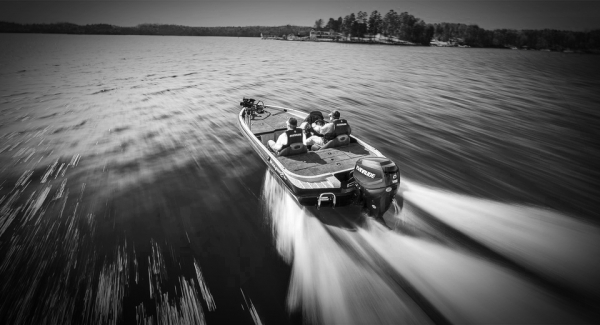When the trim is set to neutral and the prop shaft is parallel to the waters surface, all of the propellers force is powering the boat straight forward. Now say you want to get up onto plain quick. This is when you want the motor trimmed all the way down. At this position the gear case is closer to the transom and the prop shaft is aimed down at around 6 degrees. The force of the prop at this angle will lift the boats stern and in turn helps lower the bow down as the boat gets on plain. If you were to try to plain out with the trim up, your bow would point to the sky, struggle to plain out, and waste fuel.
Now lets say you are on plain and your trim is still all the way down in that negative position. This is when you are going to want to trim your motor up past the neutral position so that the gear case moves away from the transom and the prop shaft points upward. Doing so you are pressing the stern down and making the bow of the boat come up. Lifting the bow up allows the boat to skim the last third of the hull across the surface of the water creating less drag, improved steering, and an increase in speed. You can over trim a motor, so listen for a change in sound as well as a decrease in speed. If you notice this trim the motor down a little or until you get the desired effect. The load you have in your boat can alter how the trim works as well. Learn to trim by feel and how your boat controls within the various trim positions.


